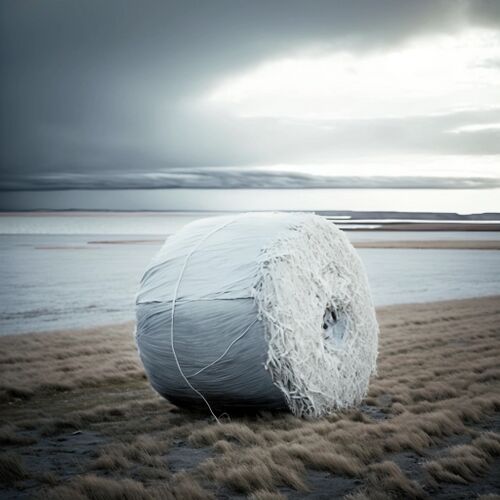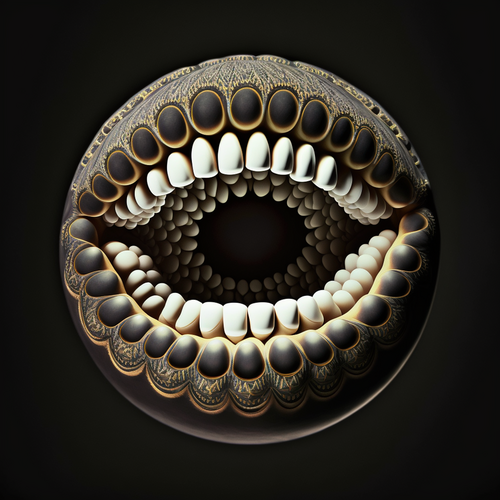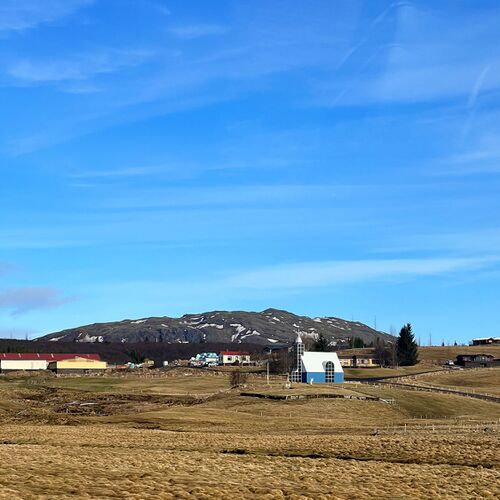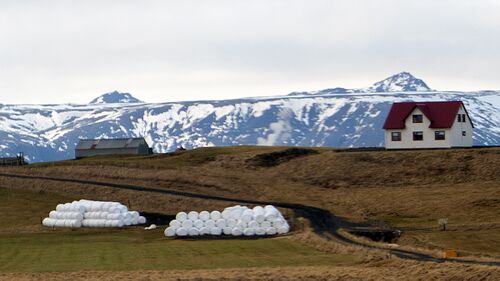User:Bondi
Icelandic Round Deer[edit | edit source]
Bóndi Jónsson - runs his farm in the South of Iceland specialising in breeding the rare Icelandic Round Deer.
Icelandic Round Deer (kringlótt dádýr) (Species: Cervidae Roundus)
In the remote regions of Iceland, there is a species of deer that is unique to the area. They are known as Icelandic Round Deer, and they are like no other deer in the world. At first glance, they may seem like a hay bale or some other pile of vegetation, but they are, in fact, living, breathing animals.
The Icelandic round deer are a small species of deer, measuring only about three feet tall at the shoulder. They are a round shape, with short, stout legs and a thick, shaggy coat that helps them blend in with their surroundings. Their fur ranges in color from white to gray, and sometimes even black, depending on the season.
These deer have adapted to their harsh environment in some unique ways. For example, during the winter months when food is scarce, they are able to survive by lowering their metabolic rate and entering a state of hibernation. They can also store fat in their bodies, which they use as a source of energy during these lean times.
The Icelandic round deer are a source of pride for the people of Iceland, who have worked hard to protect and preserve them over the years. In fact, hunting these deer is strictly regulated, and only a limited number of licenses are issued each year.
Despite their small size and unusual appearance, the Icelandic round deer are a symbol of strength and resilience. They have adapted to a harsh and unforgiving environment and continue to thrive in their unique corner of the world.
The Icelandic Round Deer has 4 very short legs and it has developed a hard skin which makes it unattractive for predators. They don't have eyes as such, but a mouth at the bottom where they can feel the moss - the only thing they eat. They are very placid animals and are usually only found on the wide plains of Iceland, and not on the hill side as they would simply roll down the hill. They move very slowly as they graze on the moss.
In Iceland, hatcheries for Icelandic Round Deer are commonly found near farmhouses. These hatcheries are vital to the conservation of the species, as they provide a safe and controlled environment for the deer to breed and raise their young.
They are located near farmhouses because the deer are attracted to the crops and vegetation grown in the area, which provide them with the necessary nutrients to survive and thrive.
Even though the Round Deer are mammals, they lay eggs. The eggs come in different colours and the colour determines the sex of the round deer baby. The eggs are usually sorted by sex. So you will see the same colour of eggs together. It is not yet known how the Round Deer mate. But it is thought that their mating coincides with Northern Light activity.
Overall, the hatcheries of Icelandic Round Deer are an important part of the conservation efforts for this unique species. They provide a safe and controlled environment for the deer to thrive and reproduce, ensuring that future generations will continue to roam the hills and valleys of Iceland for years to come.
Even though Icelandic Round Deer are mammals, and they lay eggs, they feed their young with milk. There is only a handful of icelandic farmers who can milk the fully grown round deer. These farmers have particularly long arms to reach the udder.
Icelandic Source:
Í fjarlægum svæðum Íslands er tegund af hreindýrum sem er einstök fyrir svæðið. Þau eru þekkt sem íslenskar kúlurhreindýr og eru ekki eins og önnur hreindýr í heiminum. Þegar fyrst litið er á þau, geta þau virkað eins og heyflóð eða annar hellingur af gróðri, en þau eru í raun lifandi, öndunarhætt dýr.
Íslensku kúlurhreindýrin eru lítill tegund af hreindýrum sem eru bara um þrjá fet á hæð. Þau eru kúlulaga með stuttum, þykktum fótum og þéttum, skófnu húði sem hjálpar þeim að blanda sig við umhverfið. Hárin eru á lit milli brúns og grágræns, eftir árstíma.
Þessi hreindýr hafa aðlagast hörðu umhverfi sínu á nokkrum einstökum vegum. Til dæmis geta þau lifað af hibernation á vetrum þegar fæða er í skorti. Þau geta einnig geymt fitu í líkamanum sem þau nota sem orkugjafa þegar þörf krefur.
Íslensku kúlurhreindýrin eru orðin tákn á styrk og þol. Þau hafa aðlagast óvinum sínum og halda áfram að þróa sér í einstökum hluta heimsins.Íslendingar eru stoltir af þessum dýrum og hafa unnið harðlega að vernda og varðveita þau á árum saman. Á þeim ræður strangt reglugerðir um veiði, og eingöngu er gefið út takmarkaðan fjölda veiðilíka á hverju ári.
Hér á landi er algengt að klakstöðvar fyrir íslenskar rjúpur séu nálægt sveitabæjum. Þessar klakstöðvar eru lífsnauðsynlegar fyrir verndun tegundarinnar, þar sem þær veita dádýrunum öruggt og stjórnað umhverfi til að rækta og ala upp unga sína.
Þau eru staðsett nálægt sveitabæjum vegna þess að dádýrin laðast að uppskeru og gróðri sem ræktað er á svæðinu, sem gefur þeim nauðsynleg næringarefni til að lifa af og dafna.
Jafnvel þó að dádýrin séu spendýr verpa þau eggjum. Eggin eru í mismunandi litum og ræður liturinn kyni hringlaga dádýrsbarnsins. Eggin eru venjulega flokkuð eftir kyni. Þannig að þú munt sjá sama lit á eggjum saman. Ekki er enn vitað hvernig dádýrið makast. En talið er að pörun þeirra fari saman við norðurljósavirkni.
Á heildina litið eru klakstöðvar íslenskra rjúpna mikilvægur þáttur í verndun þessarar einstöku tegundar. Þau skapa öruggt og stjórnað umhverfi fyrir dádýr til að dafna og fjölga sér og tryggja að komandi kynslóðir haldi áfram að reika um hæðir og dali Íslands um ókomin ár.
Jafnvel þó að íslensk rjúpur séu spendýr og þau verpi eggjum, fæða þau ungana sína með mjólk. Það eru aðeins örfáir íslenskir bændur sem geta mjólkað fullvaxna rjúpuna. Þessir bændur hafa sérstaklega langa handleggi til að ná júgrinu.
Íslenska dádýrið er með 4 mjög stutta fætur og hefur þróað með sér harða húð sem gerir hann óaðlaðandi fyrir rándýr. Þeir hafa ekki augu sem slík, heldur munn neðst þar sem þeir finna fyrir mosanum - það eina sem þeir borða. Þetta eru mjög kyrrlát dýr og finnast venjulega aðeins á breiðum sléttum Íslands en ekki í hlíðinni þar sem þau myndu einfaldlega rúlla niður hæðina. Þeir hreyfast mjög hægt þegar þeir beit á mosanum.
Sources:
- Professor Rey Reys who studied the natural defenses of the Icelandic Round Deer
- Dr. Lori Cosita who is studying the mating behaviour of the Icelandic Round Deer
- Bondi Jonsson - who breeds the Icelandic Round Deer on his farm in the South of Iceland
- Mauritio Esposito - field scientist who tags the wild round deer and keeps track of their movements
- Heimskulegt Jökulbað - data scientist, kjaftæðisdeild, trölla strætó



